#Hati&Máni
Explore tagged Tumblr posts
Text






Tis been a while since I posted something here! Sorry but I have a job and I can't work on my projects because of that :( well let's not dwell in this for now huauhauh
Now, it's time for something I've been working for a while now. For the past few weeks/months, I've been really invested in Brawl Stars again and finally, I decided to make some Brawl Stars art, and since there's now a Nordic theme, I decided to make some skins for brawlers that haven't received any love for this theme. I haven't made their effects and such, but their design are already done.
Go check out my P@tre0n if you want to see them early on!!!
#brawl stars#brawlstars#brawl stars skin#northen saga#mandy#mandy brawl stars#brawl stars mandy#nita#nita brawl stars#brawl stars nita#bonnie#bonnie brawl stars#brawl stars bonnie#berry#berry brawl stars#brawl stars berry#emz#emz brawl stars#brawl stars emz#angrboða#angrboda#hati#sköll#skoll#máni#mani#sleipnir#hela#norse mythology#skin
12 notes
·
View notes
Text

I know I've asked this before but what is an elliptical orbit but a cosmic roller derby track?
#old art#máni#moon#norse mythology#norse pagan#heathenry#paganblr#heathen#norse paganism#pagan#queer pagans#queer pagan#skoll and hati#norse gods#norse heathen#norse deities#norse polytheism#roller derby
11 notes
·
View notes
Text

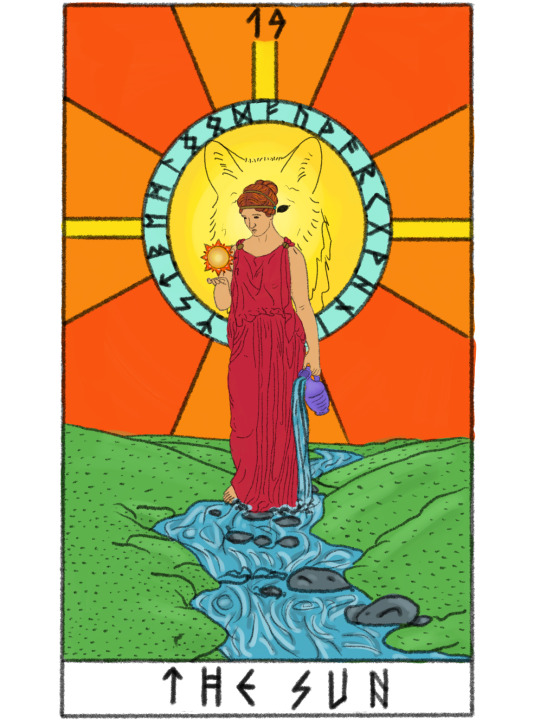
Alternative Máni and Sól(sunna) cards with sköll and hati included
#mendel makes#drawing#norse mythology#norse gods#norse tarot card project#tarot#custom tarot deck#máni#mani#sól#sol#sunna#sköll#hati#skoll
24 notes
·
View notes
Text

Fun Fact:
One day, the Sun and Moon will be swallowed by wolves...well, at least according to Norse myth they will be.
In Norse mythology, the Sun is personified by a woman named "Sól" and the Moon is personified by a man named "Máni". Sól pulls the Sun behind her chariot, and Máni pulls the Moon behind his, thus giving us the passing of time. But their journey through the sky isn't all sunshine and rainbows. Snorri Sturluson tells us that Skoll and Hati, the two wolf children of Fenris, are chasing them, always nipping at their heels. And it's foretold that when Ragnarok arrives, Skoll and Hati will catch up to their prey and devour them.
Some sources do disagree with Snorri and contend that the Fenris Wolf will be the one who eats the Sun and Moon when it breaks out of captivity, not the other two wolves. But no matter what version you prefer, Sól will have a daughter (also named "Sól") that will take her place to pull the Sun across the sky, continuing the passage of time.
#Norse mythology#Sun and Moon#Sól#Máni#Snorri Sturluson#Skoll#Hati#Fenris#Ragnarok#Prose Edda#Younger Edda#Snorri's Edda#Edda#Old Norse
3 notes
·
View notes
Text

🌘 Máni, god of the moon, embodies the nocturnal skies. He commands his celestial chariot, casting pale illumination in his wake. He symbolizes contemplation and introspection, offering a tranquil respite from the business of the day. Yet, Máni’s fate, too, is intertwined with the prophesied Ragnarök, when he will face his relentless pursuer, Hati, the wolf that seeks to devour the moon, heralding the cataclysmic end.✨💫
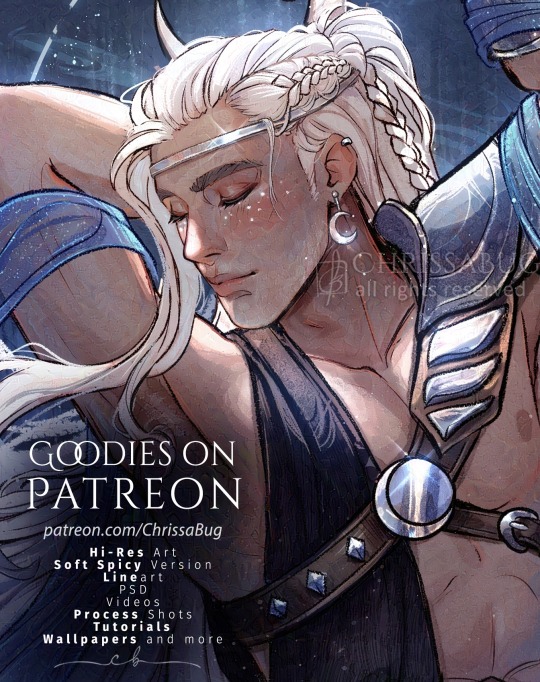
308 notes
·
View notes
Text

༺ Máni ༻
God of the Moon, brother to Sól, goddess of the Sun. These siblings are the deities of timekeeping in the Norse and Germanic mythologies. Máni is attested as a beautiful god, with raven hair and silvery eyes. He, as well as his sister, brings night upon Earth as he races across the sky in his chariot, forever chased by a relentless wolf, Hati.
It was thought that during eclipses, Hati had gained on Máni. But by the coming of Ragnarök, it is the god's destiny to be caught and devoured by this wolf.
#máni#máni and sol#máni and sol devotion#máni deity#norse paganism#norse mythology#norse pagan#norse gods#pagan#paganism#heathenry#æsir#germanic paganism#german mythology#norsemytholgie
25 notes
·
View notes
Text
Deity Introduction:
Lady Sól, Norse Goddess of the Sun
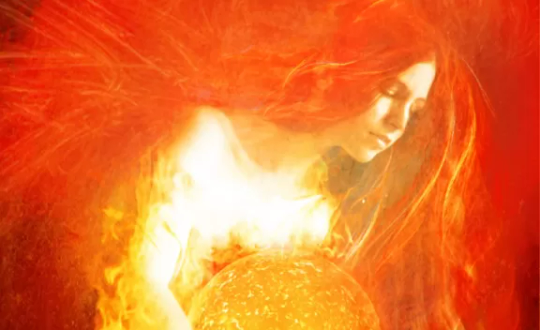
Backstory according to Norse mythology:
In Chapter 11 of the Prose Edda, Gylfaginning, a Völva describes Sól and her origins (Vikings Valhalla, 2023). The Völva says that Sól was the mortal daughter of a man named Mundilfari (Vikings Valhalla, 2023). Like her brother Máni, she was named after a celestial creation due to her outstanding beauty (Vikings Valhalla, 2023). She was named after the sun while her brother was named after the moon. However, this action by Mundilfari was perceived as arrogance by the Aesir, and as such they brought Sól and Máni to the heavens and forced them to "count the years for men" (Vikings Valhalla, 2023). Sól is described as being both the literal embodiment of the sun as well as a goddess who oversees the sun (Ýdalir).
Both Sól and Máni are said to drive horse-drawn chariots across the sky, representing the perceived movement of the sun and moon (Norse Mythology for Smart People). The horses who pull Sól's chariot are named Árvakr ("Early Riser") and Alsviðr ("Swift") (Norse Mythology for Smart People). Chasing after Sól and Máni are two ferocious wolves, Sköll ("Mockery") and Hati Hróðvitnisson ("Hate"), who wish to swallow the sun and moon, similar to the myth of Fenrir (Britannica Kids; Norse Mythology for Smart People).
It is said that during Ragnarök, both wolves will finally catch up to the pair and swallow them whole, fulfilling their plan (Ýdalir). However, after this takes place, Sól will execute one final action: birthing a nearly identical daughter who is to replace her as the new sun goddess (Ýdalir). The name of this daughter is widely contested. Some sources claim that her name is simply Sól, just like her mother, while others say that her name is Álfröðull, Sunna, or something else entirely (Ýdalir; Vikingr, 2024). Furthermore, it is uncertain whether this daughter figure is an independent being of Sól or instead a direct reincarnation of her. Regardless, Norse myths state that this new goddess will be one of the very few deities to survive the events of Ragnarök (Ýdalir; Viking Valhalla, 2023). Together with the other remaining deities, she will help build a new world of light and hope (Ýdalir; Viking Valhalla, 2023).
Other names:
The following are alternative names that have been used to refer to Lady Sól throughout history.
Sunna, Old High German (Vikings Valhalla, 2023).
Saulė, Baltic/Lithuanian (Ýdalir; Berloga Workshop, 2019).
Sulis, Celtic/Brittonic (Ýdalir; Berloga Workshop, 2019).
Surya, Hindu/Sanskrit (Ýdalir; Berloga Workshop, 2019).
Tsar Solnitse, Slavic (Berloga Workshop, 2019).
My personal connection:
I have been a very devoted follower of Lady Sól for years. I first learned of her back in 2021 when I saw a TikTok on my feed saying "this video is a sign that Sól wants to connect with you". Do I believe that video was a literal sign from Lady Sól? No, not really, and admitting that I found out about her through a TikTok is kinda embarrassing to me. However, it's undeniable that the TikTok directed me towards her, and I am very grateful for that.
I have always felt a very strong connection to her, which I find funny considering I used to totally be a moon fan when I was younger. I loved the darker, edgier side of things and honestly kind of bristled when it came to bright, optimistic icons like the sun. However, learning of Lady Sól and devoting myself to her truly marked a significant change in my life. I was undergoing a lot of hardship and pain, especially in 2021, and I felt that Lady Sól relieved my sorrow on multiple occasions, guiding me towards a brighter future. She aided me in becoming a better, stronger person, someone who can always maintain hope and optimism.
Although I regard the other Norse deities with respect and worship a handful of them, Lady Sól has always been my patroness.
My personal experience:
I have found Lady Sól to be an incredibly loving, warm, and motherly deity. In my experience, she has the capability of being both kind and soft as well as fierce and bold. When I think of her I always think of the phrase "the sun giveth and taketh". She is very sweet but will not hesitate to protect herself and those she loves.
I have also found Lady Sól to be quite drawn towards the "tough love" approach. She is not harsh, but she is honest and forward. If she believes you have the strength to persevere then she will push you to overcome any obstacles you face. When blindsided by a tragedy, it may feel like the end of the world for you, but Lady Sól will step in and essentially say, "hey, you're stronger than this hurdle. This is not the end. There is a bright future ahead and everything will be okay. Don't let this defeat you." As I mentioned before, I perceive her to be very motherly, so expect her to keep a watchful eye over you and persuade you to go down paths that she believes are in your best interest (as well as dissuade you from going down paths that are not in your best interest).
Associations:
The following are associations I personally attribute to Lady Sól.
Warm colors (red, yellow, orange)
Birds
Butterflies
Fire
Summer
Citrine
Sunstone
Stars
Sunflowers
The Sun tarot card
Sowilo rune (ᛋ)
Qualities:
The following are qualities and characteristics I personally attribute to Lady Sól. I believe these themes resonate the most with her and as such give her expertise in strengthening these qualities among her followers.
Hope
Optimism
Happiness
Resilience
Courage
Clarity
Strength
Passion
Conclusion:
I hope this helps people learn a bit more about this relatively unknown deity! There is unfortunately not a lot of recorded information regarding Lady Sól so she has often been overshadowed by other deities within the Norse pantheon. She is wonderful, however, and deserves far more recognition!
Sources:
"Norse Gods: Sól." Ýdalir. https://ydalir.ca/norsegods/sol/.
"Sol." Berloga Workshop. October 10, 2019, https://berloga-workshop.com/blog/81-sol.html.
"Sol and Mani." Britannica Kids. https://kids.britannica.com/students/article/Sol-and-Mani/313604.
"Sol and Mani." Norse Mythology for Smart People. https://norse-mythology.org/sol-mani/.
"Sol | Norse Mythology." Vikings Valhalla. December 14, 2023, https://vikings-valhalla.com/blogs/norse-mythology/sol-norse-mythology?srsltid=AfmBOorCKYkZ4zH_IVdZlNR4HSXCU7hPHXBWgQkWUgyfQuKZynAgscoz.
"Sól: The Radiant Sun Goddess of Norse Mythology." Vikingr. December 17, 2024, https://vikingr.org/norse-gods-goddesses/sol?srsltid=AfmBOooIJTJl6-TL4vLTgldestonSJ3ZRic9RkuU1TFcygvoxOU7lgUx.
#norse paganism#norse mythology#paganism#witchcraft#heathenry#sol#norse polytheism#norse gods#mythology#witchblr#polytheism#spirituality#history
39 notes
·
View notes
Text
so i was watching Fit's stream and he was cleaning up a Federation outpost.... what's up with the outpost names huh? long post warning TL;DR at bottom.
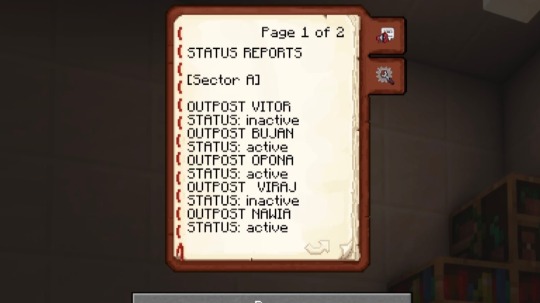
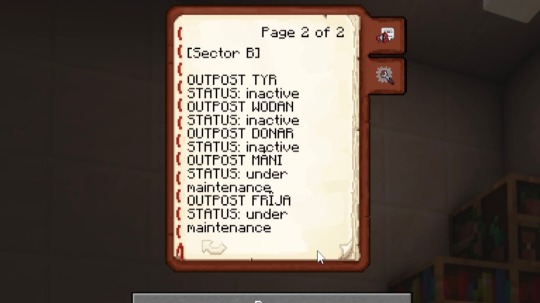
Sector A's outpost names are derived from Slavic mythology; specifically special places from the myths. after searching these names online i found this website: https://meettheslavs.com/slavic-mythological-places/ taking from the website; 1. there's a "mystical mountain of Vitor" that's "built in heaven" and "hard to find because it changes its location as soon as the wind blows in a different direction". it's also said to have dragons living on it (this is the one Fit was sent to for repairs, and it also had weird blue draconic-looking creatures around it. it was also an icy mountain...) 2. there's a "Buyan/Bujan Island", described to "appear and disappear with the tides" and be the "dwelling place of three brothers, the Northern, Western and Eastern winds". 3. there's a "Kingdom of Opona", an "imaginary place [that] existed at the edge of the Earth which [ancient Russians] imagined as a flat plane." it was believed "free and happy [peasants]" lived in this country under a "true and just" ruler. 4. there's a "Vyraj/Viraj", a "resting place for the souls and spirits" AKA the equivalent of Heaven in Slavic mythology. it's "a place where birds find their retreat in the winter". (notably this outpost is inactive) 5. lastly there's a "Nav/Nawia", a "mysterious place for the souls of the dead", and "often interpreted as another version of the imaginary place Vyraj", so AKA Hell or the Underworld. (the Hell outpost is active but not the Heaven outpost???) If Outpost Vitor sort of matches the description from the myth, maybe the other outposts do too? so like Bujan is on an island in the sea, Opona is super far out in a village maybe, Viraj and Nawia i have no clue... Sector B's outpost names are derived from Norse mythology; specifically Norse gods. being a nerd i noticed this instantly which was what tipped me off to search up Sector A's names. taking from various sources, but mostly from their Wikipedia articles: 1. "Tyr" is an one-armed god representing justice and fair treaties despite being a god of war, who lost his arm in the process of binding Fenrir the wolf. he dies in Ragnarök. 2. "Odin/Woden/Wodan" is the ruler of Asgard, the All-Father, and the one-eyed god of wisdom war, and death. he presided over Valhalla, a sacred hall that housed dead warriors in preparation for Ragnarok. he dies in Ragnarök. 3. "Thor/Donar" is probably the most popular Norse god, the god of thunder. the embodiment of strength, he is the protector of the Æsir and the humans. he dies in Ragnarök. 4. "Máni" is the god of the Moon and brother of Sol, the goddess of the Sun. they is eternally chased by Skoll and Hati, two wolves who seek to plunge the world into chaos by eating the Sun and Moon. he dies in Ragnarök. 5. Outpost Frïja I believe is "Frigg", the Queen of Asgard and the goddess of marriage, family and motherhood. she lives in Ragnarök. notably, all five gods (and goddess) lend their names to days of the week (Máni -> Monday, Tyr -> Tuesday, Woden -> Wednesday, Thor -> Thursday, and Frigg -> Friday). none of these outposts are active, they are all inactive or under maintenance, so i'm inclined to believe these aren't as important right now as compared to Sector A... still, these outposts are named after Slavic and Norse myths for a reason possibly so these might be significant. Nothing particularly comes to mind but if anyone has any idea feel free to add on... TL;DR: Federation Outpost names from Fit's stream have Slavic/Norse mythology inspired names, possible significance?
252 notes
·
View notes
Text
A reminder this summer to turn off your lights at night! Light polution has gotten so bad you can no longer see Hati chasing Máni!

#alex fierro#fierrochase#magnus chase#magnus chase and the gods of asgard#mcga#magnus x alex#riordanverse#blitzstone#norse mythology#Thor says be eco friendly!
28 notes
·
View notes
Text


Hail Máni, Radiant Charioteer of the Night Sky!
On this Monday, we honor your gentle glow, you who guide the moon’s silver path across the heavens. Pursued by the wolf Hati, you ride ceaselessly, casting dreams upon the slumbering world below.
Brother to Sól, your light soothes where hers blazes, a quiet warden of tides and time. You watch over the lost and the wandering, offering solace in darkness. May your tranquil presence inspire us to find beauty in silence and strength in stillness.
Hail the God of the Moon and Dreams! Runes of Wisdom @RunesofWisdom
Mani's Day: Mánadagr: Monday
Calendar of the Moon
Mani is the God of the moon. Mani pulled the moon through the sky every night, pursued by the wolf Hati. Lunar eclipses were caused by Hati coming close to catching Mani; children banged pots together and made great noise, hoping to scare Hati away from the moon. Monday is named after him (Moon day).
Color: White Element: Water Altar: Upon a white cloth set a plate of round white cakes, a single thick white candle, a white bowl of water and a pitcher of fresh milk from a local animal. Offerings: Milk. Sugar. Nurturing another. Daily Meal: White foods, such as rice, coconut, almonds.
Mani Invocation In the dark of night You are the source of light. Our ancestors gathered at this time,
Protected by the silvery glow That drove the demons from the dark fields. Mani, Moon Father of the silver, On the surface of the ocean, You speak to us of inner tides, Of feelings swelling like waves.
You count the days, the moments, You speak of trust in the universe Proven by the lunar cycle, Something we can always count on, Something we will always see.
What is done under Moon Night Is seen by the Gods both of Darkness and Light.
(Let each come forward and be given milk to drink and a moon-cake to eat. Then let all process in a slow spiral dance, chanting.) Hail the God of the Moon and Dreams!
Image: God Mani, God of the Moon Mahaboka
6 notes
·
View notes
Text
@mandojediblogger Your posts about Tolkien’s influence on the Filoniverse inspired this. @seleneisrising I thought you’d enjoy this too.

Baylan Skoll and Shin Hati are wargs.
Quote:
“In the philologist and fantasy author J. R. R. Tolkien's Middle-earth fiction, a warg is a particularly large and evil kind of wolf that could be ridden by orcs. He derived the name and characteristics of his wargs by combining meanings and myths from Old Norse and Old English. In Norse mythology, a vargr (anglicised as warg) is a wolf, especially the wolf Fenrir that destroyed the god Odin in the battle of Ragnarök, and the wolves Sköll and Hati, Fenrir's children, who perpetually chase the Sun and Moon.”
Source: https://en.wikipedia.org/wiki/Warg
So who are Skoll and Hati chasing in Ahsoka?
Shin Hati is in conflict with Sabine Wren in the trailer, and Baylan Skoll seems to be Ahsoka’s foe in the footage we’ve seen so far.
Quote:
“In Norse mythology, Hati Hróðvitnisson (Old Norse: [ˈhɑte ˈhroːðˌwitnesˌson], first name meaning "He Who Hates", or "Enemy") is a warg; a wolf that, according to Snorri Sturluson's Prose Edda, chases Máni, the Moon, across the night sky, just as the wolf Sköll chases Sól, the Sun, during the day, until the time of Ragnarök, when they will swallow these heavenly bodies.”
Source:
Apparently Skoll chases the sun (Ahsoka) and Hati chases the moon (Sabine). So if they catch them does that mean that Ragnarök, the Twilight of the Gods, will begin?
“War is inevitable. One must destroy in order to create.” —Baylan Skoll in the Ahsoka trailer.
Dave Filoni likes to tell us what he’s been up to without really telling us. Remember the Rebels episode called “Wolves and a Door”?
Ahsoka may take us on a “new road” or along “hidden paths” by way of a “secret gate.”
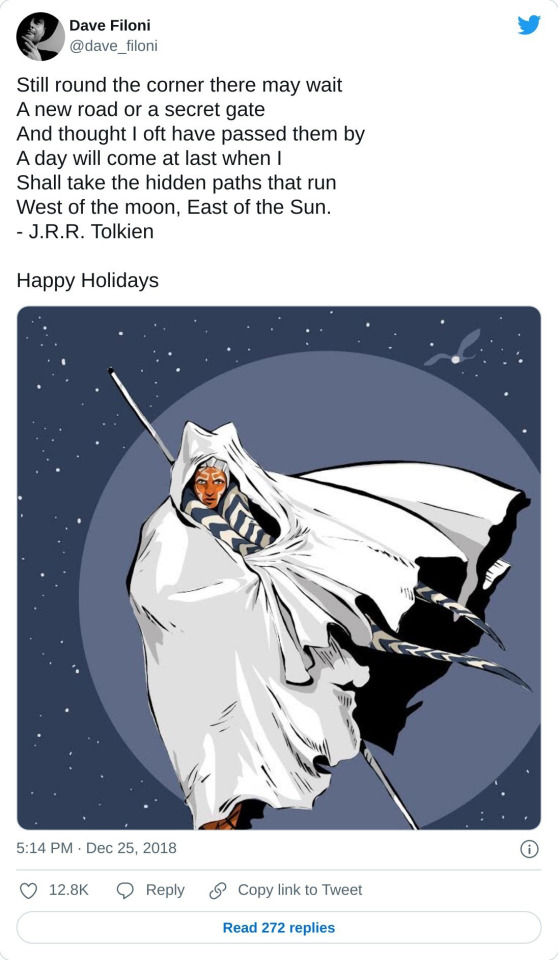
#sabine wren#star wars#ahsoka series#ahsoka tano#baylan skoll#shin hati#wargs#j r r tolkien#dave filoni#star wars rebels
69 notes
·
View notes
Note
is it true that skoll chases the moon and not the sun?
The short answer is that it appears to be "no." As far as we can tell, Skoll/Sköll chases the sun.
Grímnismál says:
Sköll heitir ulfr, er fylgir inu skírleita goði til varna viðar, en annarr Hati, hann er Hróðvitnis sonr, sá skal fyr heiða brúði himins. 'A wolf is named Sköll who follows the bright-faced god to the wood-shelter, but the second is Hati, he is Hróðvitnir's son, that one shall (go) before the bright bride of the sky.'
('Wood-shelter' is taken to mean the trees on the horizon, that is, until setting.)
Snorri restates this in plainer prose language:
Þat eru tveir úlfar, ok heitir sá, er eftir henni ferr, Skoll. Hann hræðist hon, ok hann mun taka hana. En sá heitir Hati Hróðvitnisson, er fyrir henni hleypr, ok vill hann taka tunglit, ok svá mun verða. 'There are two wolves, and the one which goes after [the sun] is called Skoll. She fears him, and he will take her. And the other is called Hati Hróðvitnisson, who runs before her, and he wants to take the moon, and that will happen.'
So strictly speaking, neither of them chase the moon. According to both of these, Sköll follows behind the sun, and though Hati will eventually take the moon, his position is described as being in front of the sun.
It's not clear to me that the Grímnismál stanza couldn't be interpreted such that it skírleita goð could be Máni rather than Sól, though I agree the traditional interpretation is much more likely. The word goð 'god' reveals nothing about gender, as it's neuter in Old Norse. But while the word skírleitr 'bright-faced' could certainly apply to the moon in isolation, if someone says "the bright-faced one" and the sun is an option, we know they're talking about the sun. It would also indicate a situation where, while Sköll is chasing Máni, Sól is chasing Hati.
My interpretation of this is that the sun is flanked by wolves, and that the one following behind her will eventually get her, at which point the one who had been ahead of her will break off and get the moon.
For a long time this has been interpreted as referring to the phenomenon of "sun dogs," a phenomenon where the sun actually does appear to be flanked by two smaller sun-like bodies, caused by refraction of the sun's light. Conditions for sun dogs are not uncommon in Iceland. In Icelandic folklore, when they appear, it's said that "the sun is in úlfakreppa," meaning something like 'wolf-touble' or 'wolf-danger.'
In Vafþrúðnismál, it's Fenrir who gets the sun. Snorri also makes mention of a certain Mánagarmr, whom he calls the mightiest of the entire family of "jötnar in wolves' shape," presumably meaning something like 'moon-dog,' though Garmr is the name of a specific mythological dog and not a normal word for a dog (normally it means 'a tatter, rag'). This Mánagarmr is also supposed to swallow the moon. Since Snorri seems to present Hati and Mánagarmr as different, he may be contradicting himself. But it's also possible that while Hati captures the moon he doesn't eat him, leaving that to Mánagarmr; and it's also possible that they are the same and Snorri phrased it strangely; or else that he had two contradictory pieces of lore that he tried to fuse together.
My suspicion is that the precise identities of who did what here were rather fluid up until a late time.
51 notes
·
View notes
Text
Mani and Sol in Norse Legends
In #Norsemythology, Máni🌙 the giant-born son of Mundilfari, reigns over the moon's last quarter, casting his silver light as a quiet sentinel in the sky. Alongside his sister Sól ☀️, the Sun goddess, he traverses the heavens, forever fleeing the wolf Hati 🐺, the "Moon Eater," who chases him toward Ragnarök’s dark fate.
🌗Máni's story deepens with a mysterious act: he plucks Hjuki and Bil from Midgard 🌍 snatching them as they journeyed with their pail, Sægr, on the pole Simul.
🌃Now they trail him across the heavens, their silhouettes faintly etched in the moon’s face. Their eternal toil symbolizes the waxing and waning of the moon, guiding wanderers with their glow, even as Hati’s howls stir the winds 🐺🌬️. 🐺When Ragnarök dawns, Hati will claim Máni, yet legends whisper of a new light rising, leaving Máni's legacy and his captives to flicker in a reborn sky. ✨
Image: The Wolves Pursuing Norse sun and moon gods Sol and Mani by John Charles Dollman, 1909, Public Domain.

2 notes
·
View notes
Text
#heathen#norse pagan#paganblr#heathenry#norse paganism#witchblr#lokean#germanic paganism#polytheism#religious art#pagan#paganism#polls
12 notes
·
View notes
Text
trying to think of a good symbol for hiccup and dagur to pick up that is not associated with either of their original tribes....
like maybe some of the norse mytholgical animals?
Sköll and Hati are two monstrous wolves who pursue the sun and the moon in the hope of devouring them. Sköll chases the Sun (personified as the goddess Sól), while Hati chases the Moon (personified as the god Máni). I like the duality of these
2. Fenrir due to the ties to tyr and vadir
3. Sleipnir for running far
opinions? not set yet
9 notes
·
View notes
Text

“You keep coming back for me the way Hati would chase Máni every night. I don’t get why you do it, but I hope you signal the end of my misery.
The name precedes you. With a heart so big, you store the hate that I’m unable to muster towards others in my place. Each of the waving hairs in your pristine mane is a reflection of my idea of the sun, straight from the intelligible realm, and the sadness in my soul reflected your rays of light”.



Other designs of Hati I did.
#art#character art#wolf#wolf art#hati#norse mythology#Norse myth#wolf myth#wolf sun#sun#feral oc#character design#furry character#artists on tumblr#wolf character#Hati (Hollyander)
8 notes
·
View notes